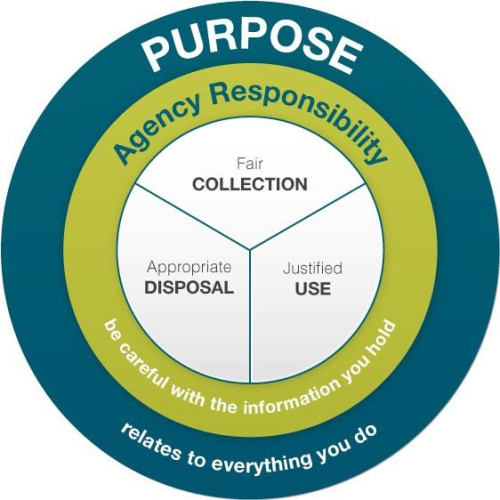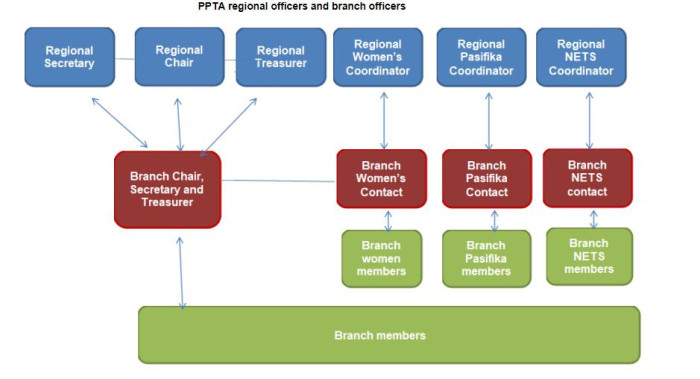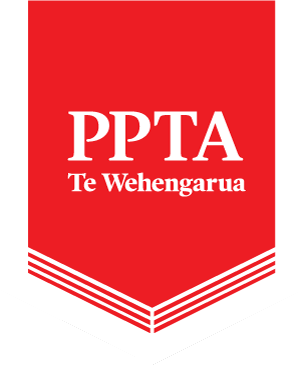PPTA Privacy Policy
Introduction
1. The PPTA Privacy Policy sets out how our members’ and staff information should be treated
by staff and office holders of PPTA to ensure that we are compliant with the Privacy Act
1993 (“the Act”) and the PPTA Constitution.
2. The type of personal information that we hold is wide ranging and has varying degrees of
sensitivity attached to it. Rather than providing specific processes for each type of personal
information, this policy sets out general principles that should be applied/questions that
should be asked and provides examples to assist.
3. Managers should ensure that all staff are aware of the policy and know how to comply with it
or who to ask if they are unsure
What is personal information?
1. Personal information is any information about a living person, where that person is capable of being individually identified.
2. Examples of personal information of our members held by PPTA include:
- Name and contact details: for example, our membership administration team hold the names, phone numbers, email addresses and home addresses of all of our members and similar information is held about staff;
- Conduct or competency information: for example, a field officer and their PA may hold information about a member that is subject to an investigation at their school, including medical reports or transcripts of confidential disclosures;
- Email queries from members: for example, our travel administrator may hold information about a member’s travel arrangements and an advisory officer may receive an email query from a member about a policy area;
- Staff information: for example, identification details (such as a passport number), pay details, leave details, and performance review information.
Key Principles and Statements
1. The chart in Appendix A outlines the key principles that should be considered when collecting, using and disposing of personal information: fair collection, justified use and appropriate disposal.
2. The Privacy Commissioner’s Office has advised that this sits alongside the following key statements:
- Only collect personal information that you really need;
- Get it directly from the person wherever possible;
- Be open with people about what’s going to be done with it;
- Be fair about how you get it;
- Keep it secure;
- Let the person see it if they want to;
- Fix it if the person thinks it’s wrong;
- Take care that it’s accurate before using it;
- Dispose of it when it’s no longer needed;
- Use it only for the purpose you got it;
- Only disclose it if you have a good reason; and
- Only use “unique identifiers” where it is clearly allowed.
What do PPTA members consent to their private information being used for?
1. On the membership form, members consent to their information being used for the following purposes:
| All members | Voluntary |
| The purposes of bargaining (for example, negotiations); | PPTA Māori electoral roll; |
| Enforcement of the collective agreement; and | Teacher member also working in an ACE; |
| Access to other membership benefits. | New teacher; |
| Pasifika electoral roll; | |
| Itinerant teacher of music; and | |
| Deputy/Assistant Principals/Principals. |
2. The membership form states that consent is given to “the authorised officers and agents of NZPPTA”. As above, it still needs to be relevant and necessary for any individual staff member or PPTA officeholder to have or use the information.
3. A member’s consent in respect of their personal information held by PPTA continues until the member withdraws it in writing.
4. The Office of the Privacy Commissioner has noted that:
- It is important to have a clear mandate for collecting, using and sharing personal information;
- The first two purposes that all members consent to are relatively narrow;
- “Membership benefits” is a relatively broad purpose so, for example, would extend to a PPTA newsletter being sent out from national office;
- In respect of the voluntary purposes, it may be useful to include a one-liner on the membership form to explain the PPTA network structure;
- Sharing the information is legitimate if it fits one of the stated purposes and is necessary for a person to do their job;
- All members should be informed that, under the Act, they have the right to update their personal information held by PPTA.
5. These principles and the nature of the authorisation from members are also important to consider when using information in different forums. For example, we often survey members about key issues, such as workload, stress surveys, or whether to ratify a claim. All of these examples would be permitted in accordance with the membership authorisation and may, to different extents, relate to the purposes of bargaining, enforcement of the collective agreement and membership benefits. Surveys should be done in a way that ensures that the personal information from respondents is only shared with PPTA officers that need the information and anonymised wherever possible.
The PPTA Constitution and Regional and Branch structures
1. The PPTA Constitution is the starting point for understanding whether it is “necessary” for a person to access, hold, disclose and use personal information under the Act. The Constitution sets out most of the roles and responsibilities of each of the PPTA’s officers and the relationship that branches, regions and the organisation have with each other. This includes:
- “Clause 11(i)The [General] Secretary shall cause to be maintained a register of members detailing the full names occupations the workplaces the classes of membership date of joining the Association and whether such members are financial or not.”
- “Clause 23 A Regional Organisation shall have the following powers and duties (i) To support and assist the Association in furthering the Objects of the Association as defined in Rule 4 hereof. (ii) To supervise the affairs and safeguard the interests of all members and Branches within its particular Region. (iii) to form a link between its Branches and between its Branches and the Executive.” -
- Clause 15(i) Each Branch shall elect annually a Chairperson a Branch Secretary a Women’s Contact (who shall be a woman if possible) and such other Officers as it deems fit.
2. The branch handbook of the PPTA expands on the roles in the branch and how they operate in practice. It states that “Many branches are now led by an elected collective of branch representatives, among whom tasks are shared out as they arise. The size of the branch will determine the number involved in branch leadership. Each branch is autonomous and has access to funds from their region. Traditional branch positions include the chair, secretary, treasurer, and various representative roles”.
3. The handbook sets out the role of Branch Treasurer and notes many branches do not have treasurers. If present branch treasurers are responsible for ensuring that a simple and accurate record is kept of how money is used. They also make sure spending is planned and that decisions about spending branch funds are made in a democratic way and are recorded in
the committee minutes.
4. The requirements in the Privacy Act the branch structures in the PPTA constitution and additional information in the PPTA handbook enables regional and branch officers the following access:
- The 3 main Regional Officer holders (Chair/Secretary/Treasurer) can each access the Branch Chairs/Secretaries/Treasurers for their region
- Branch chairs, secretary and treasurers can have access to the membership list for the branch.
- Regional officers who are in charge of a network to have access to a list of those relevant branch contacts and the branch secretary (for example, regional women coordinators to have access to Branch Women Contacts and (if none) Branch Secretaries because women contacts have volunteered to be contacted in this way by assuming responsibility for the role); and
- Members have access to contact details for their branch and regional officers.
5. Branch and regional officers may also retain and use personal contact information that is voluntarily given provided that the purpose for collecting, using, accessing and any disclosure of the information is clear and agreed to by the member concerned and that is how the information is used. This information needs to be disposed of safely when it is no longer needed.
6. Different PPTA staff are also employed with responsibility for different networks, enforcing and bargaining the collective agreement, maintaining the membership database, and otherwise making members aware of any membership benefits.
There must always be clear justification aligned with the role of the regional or branch officer or staff member for access to and use of information.
Appropriate storage and disposal
1. Under the Act, we can only hold personal information for as long as necessary for legal purposes, and we need to ensure that it is appropriately stored and disposed of so that the privacy of the individual is preserved.
2. PPTA staff and elected officers have access to different types of personal information; for example, sensitive information related to cases, personal contact details, and membership status.
3. Appropriate storage will vary according to the type of information held. Confidential information should be kept in a way that means confidentiality is retained; for example, any printing of members’ files should be kept secure, not just left openly on a desk, and particular care should be taken when information is taken out of the PPTA offices.
4. As a general rule, seven years should be the maximum time that we hold any members’ records in paper copy unless there are good reasons not to. Seven years is the period that records are required to be held for tax purposes and should also cover off the maximum six-year limitation period for civil claims (e.g. if a member decided to take legal action against PPTA for any perceived breach).
5. At PPTA we have secure bins for destroying paper records. The bins are then taken off-site for secure destruction. This is where all paper records of members’ personal information should be put for disposal.
6. As far as practicable, electronic records should be reviewed on a periodic basis to ensure that the information is still accurate and needs to be maintained. Records held electronically for a long period may include, for example, personal contact details for members who have not resigned or changed their membership status.
Why is privacy important?
1. Breaches of privacy are a serious matter. Where a person’s privacy has been breached under the Act, the PPTA and/or the person who breached the privacy (such as an employee or authorised officer) may be liable – including a substantial financial penalty. This means we have a collective responsibility as an organisation to keep personal information safe and we each have an individual responsibility to keep the information we hold safe.
2. PPTA will not be liable where it has done “everything practicable to ensure that a problem does not arise” (this is a high threshold). Part of that means having a policy and ensuring that it is understood and followed.
3. Deliberate misuse of a member’s personal information by staff will be treated seriously by management.
Training
1. Training relating to the policy for both staff and officers should include targeted case examples to help identify both common and complicated privacy matters but to ultimately assist with building confidence in the correct use of personal information. For example, see Appendix B. In addition, there should be training incorporated as part of the regional officer training day and branch officer training.
Privacy officers of the PPTA
1. Kirsty Farrant and Michael Cabral-Tarry are the designated privacy officers of PPTA, in accordance with section 23 of the Act.
2. This means that they are responsible for:
- Encouraging compliance, by PPTA, with the information privacy principles;
- Dealing with privacy requests made to PPTA, pursuant to the Act;
- Working with the Privacy Commissioner in relation to any investigations conducted pursuant to Part 8 of this Act in relation to PPTA; and
- Otherwise ensuring compliance by PPTA with the Act.
3. They are also available to answer any questions that you may have about the privacy policy or the use of personal information.
Appendix A: Chart with key principles

Appendix B: Examples for Discussion
Jacinda is a PPTA field officer and is visiting Sweet Valley High to speak to a member about workplace bullying. She has asked her PA, Jessica, to organise a branch visit while she is there. Through the course of the telephone conversation, the branch chair casually asks Jessica what else brings Jacinda to visit the school.
What information can she share? Should she share?
_____________________________________________________________________________________________
Philip is the regional Pasifika coordinator for Auckland central region. He wants to organise a fono for his region to speak about making Hindi an NCEA Level 2 language and asks the Auckland field office for a list of all members on the PPTA Pasifika roll.
What information can the Auckland office share with Philip?
Philip promises to keep people who attended the fono in the loop with any developments with NZQA. A few people add their emails to an attendance list.
A few years later, Philip is going to be the DJ for his local church raising money for Vanuatu after the cyclone and wants to promote the event to all of his contacts. Can Philip share information about this event with people who attended the fono?
_____________________________________________________________________________________________
Mike is an advisory officer. A whole lot of trouble is brewing at Mohair High School, including the Principal trying to introduce new policies that take away all rights of staff to a rest or meal break during exam lead-in time. The branch chair and field officer have approached Mike (and National Office) for legal and strategic assistance in pushing back and challenging the Board.
Who can Mike talk to about this?
_____________________________________________________________________________________________
Toni is a field officer who is supporting a member that has been accused of sexual harassment of male staff at Dagenham High School. The case has been considered by the Board of Trustees and referred to the Complaints Assessment Committee at the Teachers Council. One of the other staff members at the school has also approached PPTA for assistance and support in their role as a witness for each stage of the proceeding.
What protocols should be introduced to help protect the privacy of the different members?
_____________________________________________________________________________________________
Geoffrey is a PA at the Dunedin field office and has been asked to print out the file of a member for a field officer ahead of a disciplinary hearing at the school. This includes all sorts of private information including medical reports and serious allegations from students. It is a busy office.
What should Geoffrey do to make sure that the information is kept private?
_____________________________________________________________________________________________
Lila is a DGS at National Office and arrives at her desk in the morning to find an email from a staff member stating that she will need to have time off work in September to have her ovaries removed. Who can Lila speak to about this and what information can be shared?
Appendix C: Information access and sharing

Last modified on Thursday, 30 January 2025 13:28
